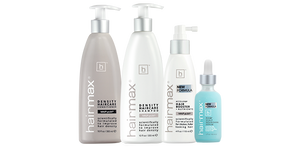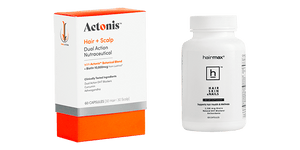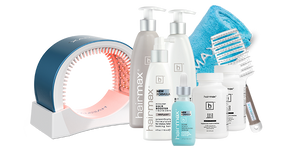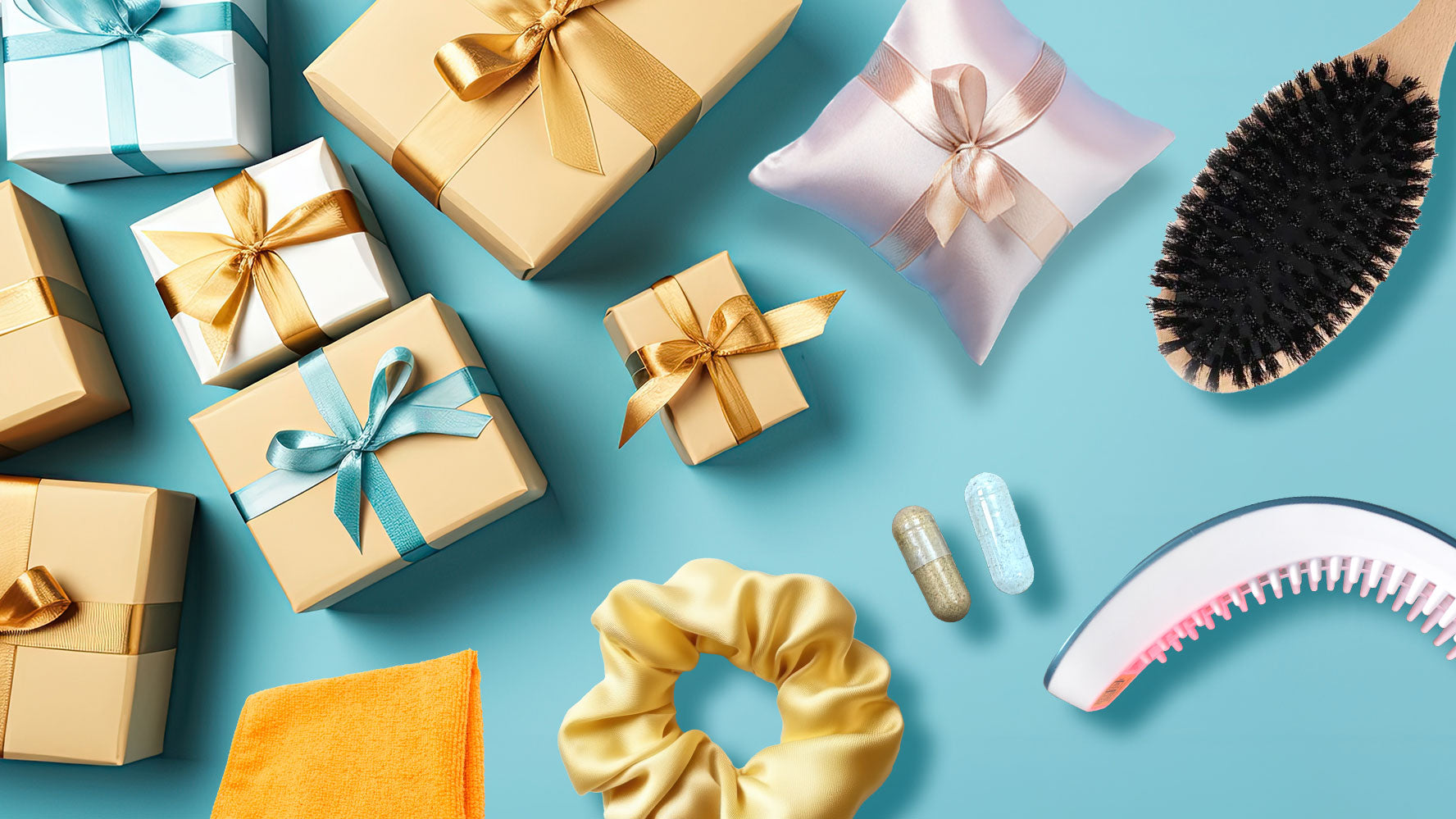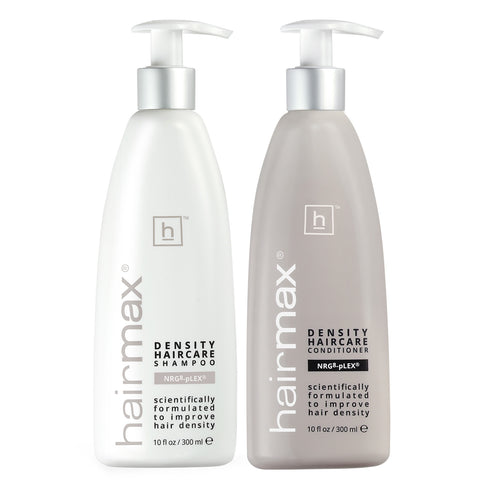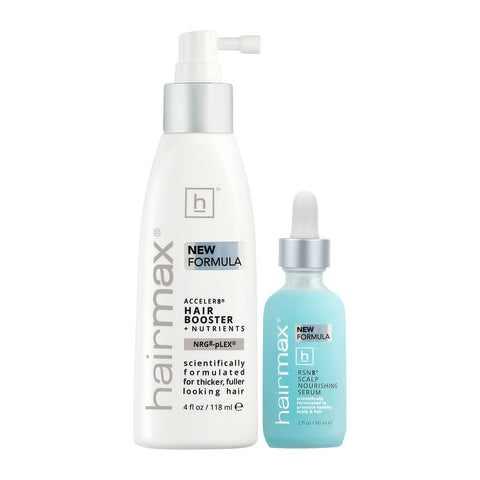Does Your Helmet Hurt Just As Much As It Helps?
Whether you’re going green and riding to work, a cyclist logging 50 miles a day, or you just love to cruise the open road on your motorcycle, you definitely feel more at home on two wheels than four. To get ready for National Bicycle Month coming up, we discussed the age-old question – can helmets cause hair loss?
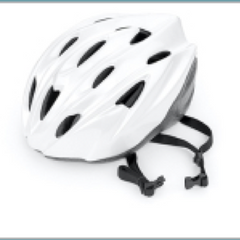
It has been long debated that the same cause of hair loss experienced by those who style their hair too tight, like in braids or a weave, could possibly be experienced by those who have worn helmets regularly for years. There have been no definitive findings by scientific research, but unofficial studies have shown potential links between accelerating existing hair loss making this topic worth exploring. Even if future scientific evidence is discovered directly linking regular helmet use to hair loss, you cannot boycott wearing one as helmets are a necessary protective precaution where the alternative could be serious injury or even instant death! So, let’s discuss a few ways to stay safe and support happy hair and scalp health.
Wear Your Helmet the Right Way
One of the reoccurring debates is that helmet use causes traction alopecia. Traction alopecia is a type of hair loss due to continuous pulling on your hair in a backwards direction. It is said that when you don’t wear your helmet correctly, by either wearing one too small or too loose, can increase hair tension by causing the helmet to pull hairs in the front of your hair line backwards.
Traction alopecia can eventually cause the roots to become too close to the scalp’s surface no longer being able to anchor securely in the scalp making it easier to fall out and eventually might even stop growing. Some also say that repeated rubbing of the helmet against your hair line can also irritate the hair shafts and cause inflammation of the scalp triggering increased hair loss.

What Can I do:
Double check your current helmet fitting. Make sure it is the appropriate size for your head, where it is not too tight or too loose. Every time you put it on, ensure that none of your hair is being pulled super tight. Try jiggling the helmet and slightly moving it to free any tension.
Some riders recommend avoiding any friction between the hairs and the helmet will help reduce the risk of hair loss by wearing a scarf, or piece of fabric, on your head before putting your helmet on.
Treat Any Existing Scalp Problems
As mentioned, while no official studies have been conducted that directly link helmet use and hair loss, many independent studies suggest that regular helmet use will aggravate preexisting scalp and hair conditions. These include dandruff, scalp infection or itchy scalp and the accumulation of sweat in your hair roots might trigger increased hair loss.
What Can I do:
If you haven’t already, visit a dermatologist or doctor to start treating it first as there could be underlying issues causing such symptoms. There is a wide range of medicated shampoos and other products you can buy, like HairMax Density Activator, that helps nourish the scalp for the growth of naturally stronger, denser hair with a calculated blend of nutrients, antioxidants and DHT blockers. there are also some home remedies you can try for a more natural solution.
For Itchy Scalps & Dandruff
There are several home remedies you can try for itchy, flakey scalps keeping in mind to always consult a care provider before trying any new remedy.
One is mixing one-part apple cider vinegar and one-part water and spray onto your scalp letting it sit for 10 minutes before rinsing and washing your hair a few times a week.
Another one we have discussed by combining different essential oils to take advantage of their potent concentration of natural nutrients for a variety of ailments.
If you really want to deeply cleanse and exfoliate your scalp, the best advice is to try HairMax Density Revitalizer that is made up of an invigorating blend of menthol and peppermint oil that is sure to leave your scalp feeling refreshed and revitalized.
Keep Your Helmet Clean
When your head sweats inside a helmet, where do you think that sweat is going? The inner layer of the helmet also gets wet with sweat, along with air born bacteria and dirt, all getting rubbed into the padding and lining of the helmet. Almost like a hot yoga class, if you work up a sweat in a confined area, it gets pretty humid and warm which can promote fungal growth and bacterial breeding.
This could potentially cause your scalp to become infected and could impact your scalp health or even hair growth.
What Can I do:
Keep your helmet clean by regularly using an anti-bacterial solution spray on the inner lining of your helmet making sure to let it air dry completely.
Store your helmet in an airy place so that it can easily dry out after use to promote hygienic storage and keep it from smelling.
There is a product called NoSweat that is a disposable sweat absorbing liner that you can stick on the inside of any helmet or hat to soak up sweat to keep it from dripping down your face and promote a hygienic helmet routine.
Keep Hair Clean & Moisturized
Having just discussed the effect of sweating in a helmet and how it can accumulate in the pores weakening hair roots possibly causing potential hair loss, so it shouldn’t be a surprise that keeping hair clean and moisturized is the next tip!
If biking, or any physical activity that makes you sweat, is part of your daily routine, you should regularly wash your hair to free the hairs of buildup and bacteria letting the scalp breath, be healthy and grow. You know that foam liner on the inside of your helmet? Well, it is said to soak up not only sweat, but also your hair’s natural moisture and oils which can dry it out.
What Can I Do:
Along with developing a helmet cleaning routine to ensure nothing can transfer into your pores during your ride, it is also suggested that when you take breaks try taking off your helmet to give both your hair and the helmet time to dry out a bit.
You could even use a cotton cloth to wipe the inside of the helmet and leave it there to soak up any sweat, and simultaneously reduce any friction between your hair and the helmet. Be sure to use a new cloth each time, or wash it before going out on your next ride to keep your hair as clean as it can be.
A lot of bikers also say that proper moisturizing can also help reduce friction between your scalp and helmet while protecting your hair from dryness at the same time. You could use a range of moisturizing products, from aloe vera or coconut oil to a leave-in conditioner, but if you really want to protect and restore your hair, try using HairMax Den-si-ty Shampoo and Conditioner regimen. With a synergistic blend of therapeutic botanicals and other supporting components, like DHT blockers, you can really help boost your hair growth!

